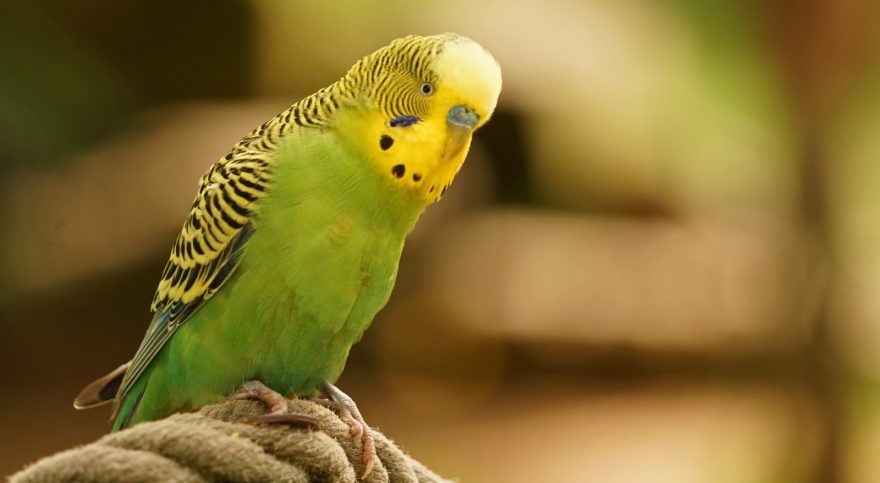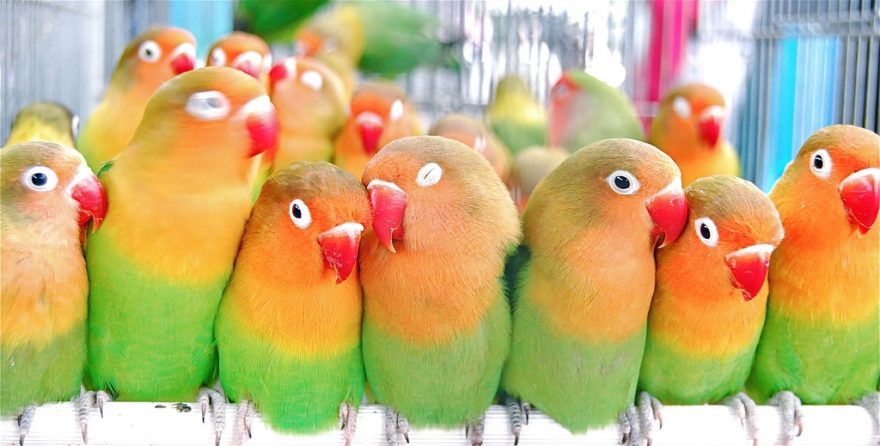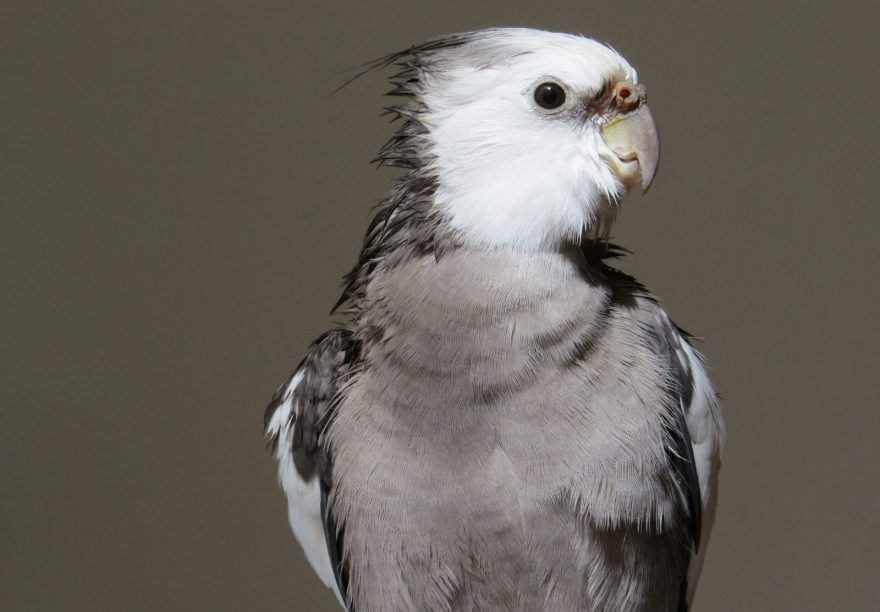There’s roughly 400 different species of parrots in the worlds, but when it comes to finding the perfect pet, not all parrots are created equal. This post looks at the five best parrots for beginners, based on their affordability and ease of care.
The humble Budgie, of course.
Budgies, also known as parakeets, are the most popular pet bird in the world for several very good reasons. Not only are they prolific breeders—and therefore easy and affordable to purchase—they are notoriously easy to train and excellent talkers. In fact, a budgie named Puck holds the record for the largest vocabulary of any bird, with an impressive 1,728 words in his repertoire.

Budgies are easy to care for, requiring only a little love and attention, clean water, seed, and the occasional treat of fruit, veggies and leafy greens. Depending on how well their cared for, budgies will live for between 5-10 years.
Masked, Fischer’s or Peach-faced Lovebirds
Like budgies and cockatiels, lovebirds are small, affordable and readily available in dozens of different colors. You can keep an individual bird if you’re willing to spend plenty of time with it, but most prefer to keep them in pairs. They form an immensely close bond and spend all day preening and cuddling with each other.

Lovebirds are a low maintenance bird, requiring only some parrot seed mix, leafy greens and the occasional piece of fruit. They will live for between 8 and 15 years.
Cockatiels, obviously.
Cockatiels are slightly larger than budgies and lovebirds, but no more difficult to keep. The “normal” cockatiel is predominantly grey, but they more than make up for their drab appearance with their quirky personality. And for those aesthetically minded among us, there are literally hundreds of different cockatiel color mutations available.

Just like most of the “beginner” parrots, a simple diet of quality parrot seed, clean water, and the occasional bowl of fruits, veggies and leafy greens. A healthy cockatiel will live for 10-15 years.
Don’t forget to check out our list of foods that are unsafe for birds to eat.